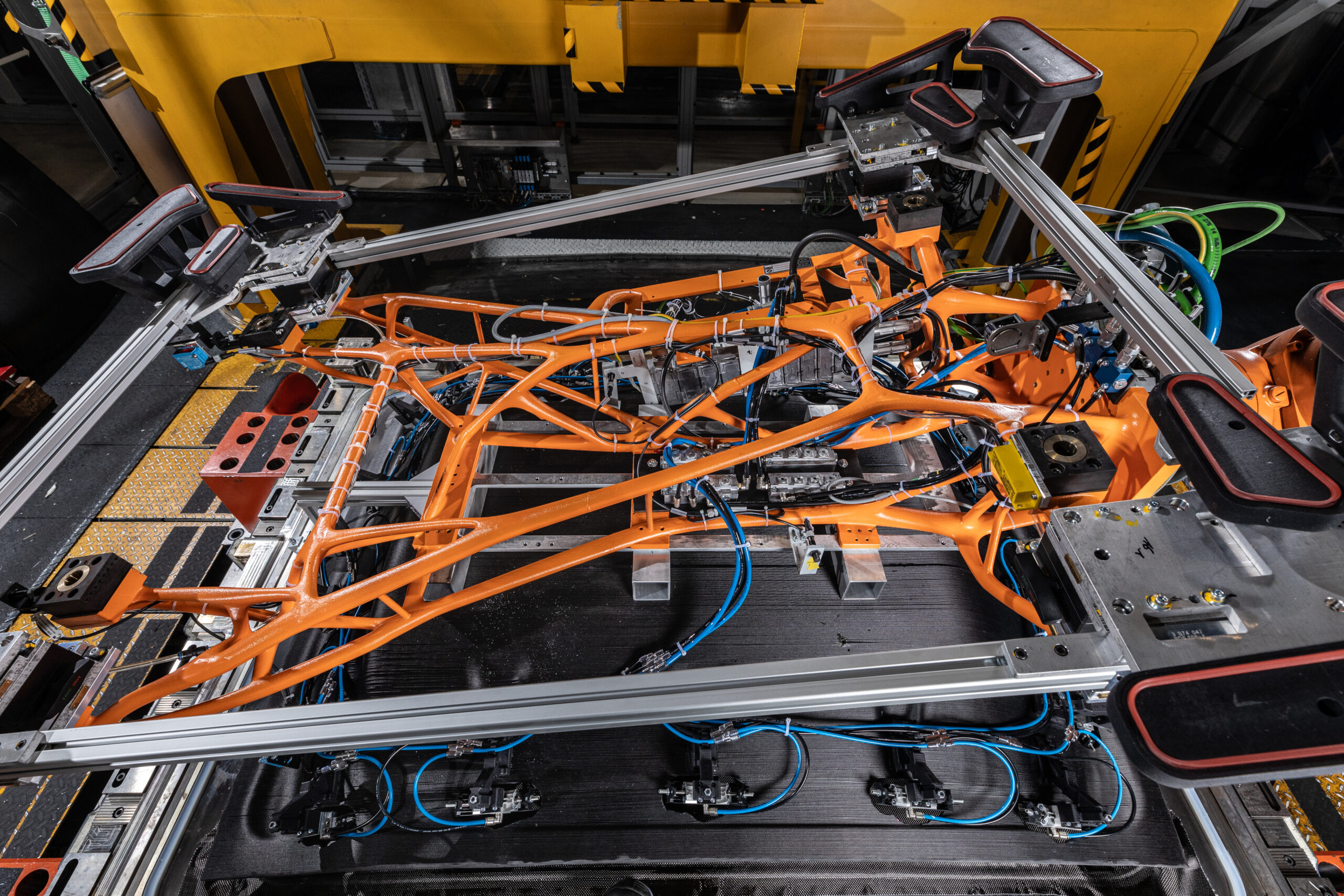The BMW Group has been a long-time user of additive manufacturing (AM), dating back to the days when it was still referred to as rapid prototyping. However, its most recent efforts trump almost everything we’ve seen in the sector, including not only its early work but even what most major manufacturers are doing. By introducing new automation techniques across polymers, metals, and even sand, the auto giant is pushing the technology toward mass production.
However, it’s not just BMW’s advancements in end parts that demonstrate its sophisticated use of 3D printing. The company is also deploying AM in unique ways on the assembly line. The company’s latest innovations focus on the development and use of 3D-printed, customized robot grippers, which are improving manufacturing processes across its global plants.
“The increasing use of additive manufacturing in the BMW Group production system has many benefits. For example, we are able to quickly, economically, and flexibly produce our own production aids and handling robots, which we can individually adapt to specific requirements at any time, as well as being able to optimise their weight. Less weight allows higher speeds on the production line, shorter cycle times and reduced costs. Plus, smaller robots can be used in the medium term, which also cuts CO2 emissions and costs,” says Jens Ertel, Head of BMW Additive Manufacturing.

Polymer robotic grippers 3D printed for handling the CFRP roofs.
At the Lightweight Construction and Technology Centre in Landshut, BMW employs a combination of selective laser sintering (SLS) and fused granule fabrication (FGF) to manufacture grippers used in the production of its carbon fiber reinforced polymer (CFRP) roofs for the BMW M3. Vacuum grippers and clamps for the needle gripper to lift the CFRP material are made via SLS, while the large roof shell and bearing structure are made with FGF.
These grippers, which weigh approximately 120 kilograms, are 20 percent lighter than conventional versions and can be made in just 22 hours. This weight reduction extends the lifespan of the robots and decreases system wear and maintenance intervals. When recycled materials are used for the FGF process, CO2 emissions associated with producing the tool are estimated to be 60 percent lower.

The roof gripper remade with sand 3D printing and casting.
Last year, the auto company introduced a new design that was even lighter than its predecessor. Relying on topology optimization, the company 3D printed a sand core that was then cast with aluminum—the same technique is uses for producing aluminum cylinder heads for its vehicles. With this process, the new gripper is 25 percent lighter than the SLS/FGF counterpart. Now, the BMW M3’s can be made with a single robot, rather than three separate machines.
Beyond CFRP roof manufacturing, BMW has been applying FGF to 3D print grippers for handling doors at its plant in Regensburg:
“With an optimized bearing structure produced using 3D printing, we were able to increase the rigidity of the gripper when handling door elements at the plant in Regensburg, while at the same time reducing weight. In subsequent projects, it is then possible to use robots with a low bearing capacity, which helps to cut costs,” said Florian Riebel, Head of Door and Flap Production.
Given the improvements made with its roof grippers, the company is exploring the use of sand 3D printing to create floor tooling, as well. At the plant in Munich, these grippers have been cast from aluminum from 3D printed sand molds, reducing the weight by 30 percent to just 110 kilograms. Still able to handle the entire floor assembly of a BMW i4, the new tools make it possible to rely on smaller, lighter lifting robots. These use less energy and are, thus, less CO2 intensive.

Polymer 3D printed gripper for handling doors.
Markus Lehmann, Head of Plant Engineering and Robotics at BMW Group Plant Munich, said of the advancements, “At the Munich plant, we are continuously expanding the use of production aids created through additive manufacturing. When it comes to the field of gripper and handling systems, we use 3D printing to equip our established grippers with individual, printed attachments and are already replacing complete gripper systems with highly-integrated and weight-optimized bearing structures. When handling the full BMW i4 floor assembly, this allowed us to reduce the weight of the complete gripper by 30 percent – 50 kg – and thus to extend the service life of our facilities.”

Floor gripper made with sand 3D printing and casting.
To design these parts, the company relies on software called Synera, which enables design optimization. Now, the company is able to use a special workflow that performs the calculation and construction of the bearing structure in a mostly automated manner.
The story comes as the auto giant begins retooling its Munich plant, where we already anticipated the use of AM across the board. In many ways, BMW is realizing many of the visions that AM enthusiasts have had for years—not just 3D printing end parts for its vehicles but implementing the technology across its entire production operations. In turn, not only will the cars it makes be more efficient, but so too will their manufacturing. Things will only get more interesting as BMW begins applying AM across the plant, where there may be even more exciting opportunities for improving the overall energy efficiency of the facility—a model which could be ported over to other industries as well.
All images courtesy of BMW.
Subscribe to Our Email Newsletter
Stay up-to-date on all the latest news from the 3D printing industry and receive information and offers from third party vendors.
You May Also Like
Printing Money Episode 14: Manufacturing Markets and 3D Printing Deals, with AMT’s Chris Chidzik & Dayton Horvath
For Printing Money’s first episode in 2024, Danny is joined by returning guest Dayton Horvath, Director of Emerging Technology at AMT, and by Dayton’s colleague, Chris Chidzik, Principal Economist at AMT. ...
CORE Offers to Buy 3D Printing Service Fathom Amid Economic Downturn
Fathom Digital Manufacturing Corp. (NYSE: FATH), a player in the on-demand digital manufacturing sector, received a non-binding acquisition proposal from CORE Industrial Partners, a Chicago-based private equity firm that played...
CORE Industrial Partners’ 3D Printing Buying Spree Continues with New Acquisition
CORE Industrial Partners completes its eleventh 3D printing firm acquisition in less than five years. Headquartered in Chicago, this private equity firm continues to focus on acquiring manufacturing, industrial technology,...
3D Printing News Briefs, December 15, 2022: 4D Printing, On-Demand Manufacturing, & More
We’re starting out with research in today’s 3D Printing News Briefs, as a Purdue University team is adding a fourth dimension to 3D printing. Then we move on to business,...































